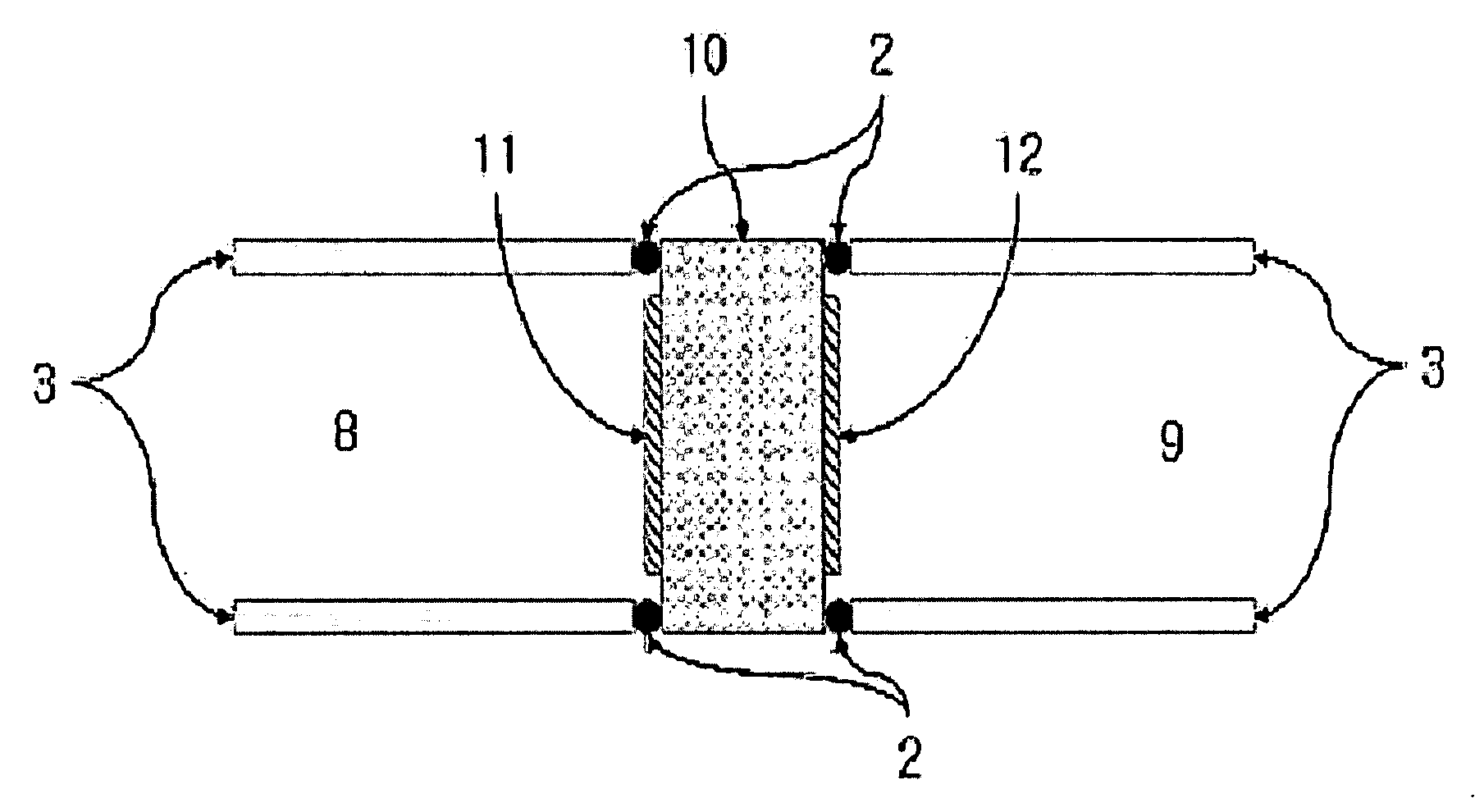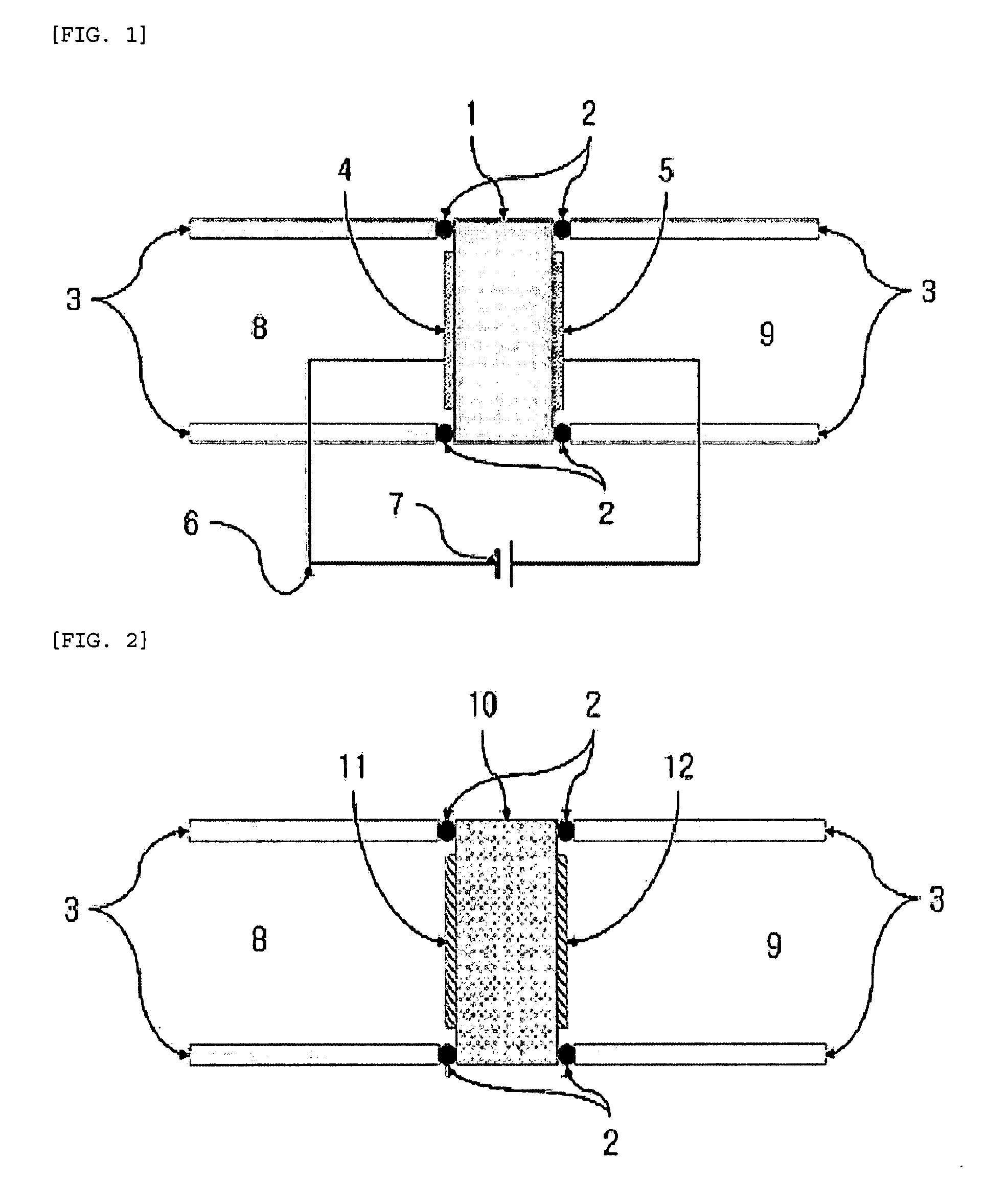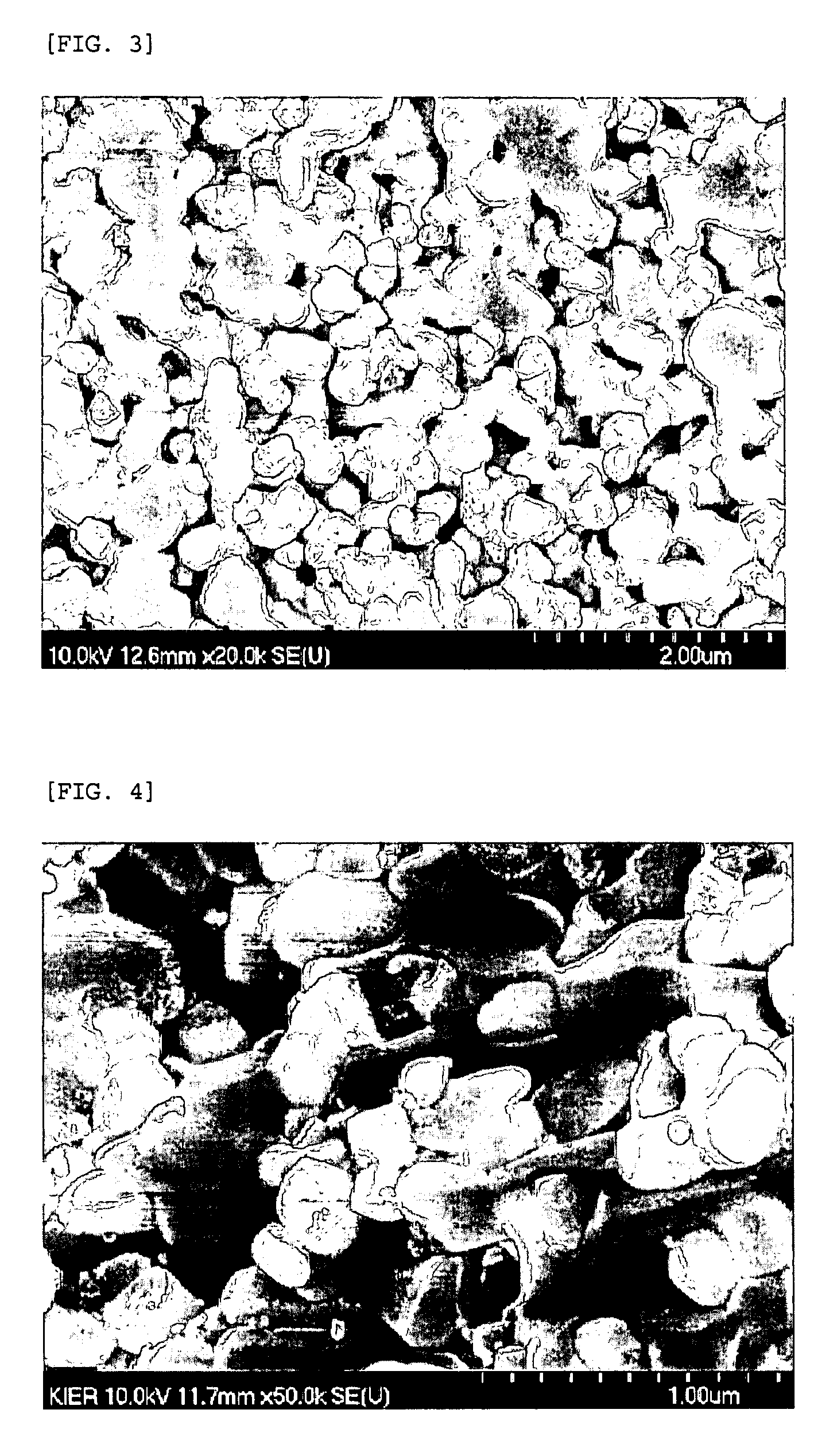Conductive membrane for carbon dioxide separation
a technology of carbon dioxide and conductive membrane, applied in the direction of membranes, separation processes, membranes, etc., can solve the problems of difficulty in technical implementation, loss of function as membranes, and difficulty in constructing apparatuses
- Summary
- Abstract
- Description
- Claims
- Application Information
AI Technical Summary
Benefits of technology
Problems solved by technology
Method used
Image
Examples
example 1
Manufacture of Conductive Membrane
[0037]A sintered perovskite oxide product, in which a molar fraction of La, Sr and Co is 0.6, 0.4 and 1.0, was produced.
[0038]The power mixture, in which the molar fraction of La, Sr and Co is 0.6, 0.4 and 1.0, was maintained at 1000° C. for 2 hours or longer, thus forming a perovskite single phase, which was then compacted under pressure of 1 tonf using a disc-shaped mold having a diameter of 21 mm, and then sintered at 1050° C., thereby producing a sintered product.
[0039]FIG. 3 is a micrograph illustrating the electronically conductive oxide structure produced through heat treatment at 1050° C.
[0040]A carbonate mixture composed of Li2CO3 and K2CO3 at a molar ratio of 62:38 was molded and then attached to the surface of the electronically conductive oxide structure. Further, a molecule-ion exchange catalyst was applied on the outer surface of the molded carbonate product and the outer surface of the electronically conductive oxide structure.
[0041]T...
example 2
Separation of Gas Mixture using Conductive Membrane
[0044]The conductive membrane manufactured in Example 1 was mounted between containers 3, as seen in FIG. 2, and an injection region 8 and a permeation region 9 were defined at both sides of the conductive membrane using a high-temperature sealing material 2. Carbon dioxide, oxygen and nitrogen were injected into the injection region, while inert gas, hydrogen or inert gas containing hydrogen was injected into the permeation region, or alternatively, the permeation region was maintained in a vacuum state, after which the membrane was maintained at 650° C.
[0045]The gases, which were separated through the conductive membrane and then discharged to the permeation region, were qualitatively and quantitatively analyzed using a gas analyzer, including gas chromatography. Among gases discharged from the permeation region, oxygen was condensed to water vapor through reaction with hydrogen, and only pure carbon dioxide was collected.
[0046]As...
PUM
 Login to View More
Login to View More Abstract
Description
Claims
Application Information
 Login to View More
Login to View More - R&D
- Intellectual Property
- Life Sciences
- Materials
- Tech Scout
- Unparalleled Data Quality
- Higher Quality Content
- 60% Fewer Hallucinations
Browse by: Latest US Patents, China's latest patents, Technical Efficacy Thesaurus, Application Domain, Technology Topic, Popular Technical Reports.
© 2025 PatSnap. All rights reserved.Legal|Privacy policy|Modern Slavery Act Transparency Statement|Sitemap|About US| Contact US: help@patsnap.com



